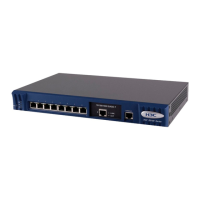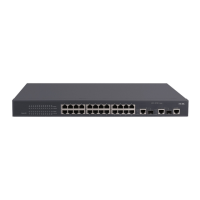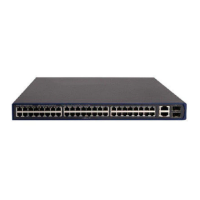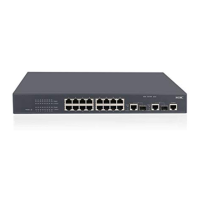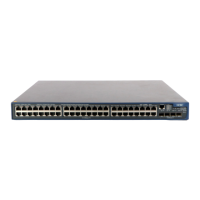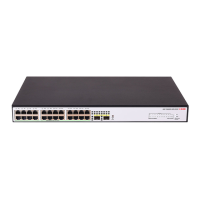2-4
destination-filename: Specifies the name of a destination file with a string of 1 to 64 letters. If no such
parameters are specified, then the destination file’s name will be the same as the source file’s.
Description
Use the tftp ipv6 command to perform the following operations:
z Download a file: Download a specified source file from TFTP server to local.
z Upload a file: Upload a specified source file from local to TFTP server.
Examples
# Download a file from TFTP server.
<Sysname> tftp ipv6 fe80::250:daff:fe91:e058 -i Vlan-interface 300 get filetoget
.
File will be transferred in binary mode
Downloading file from remote tftp server, please wait..... received: 4469 bytes in 1.243
seconds.
tracert ipv6
Syntax
tracert ipv6 [ -f first-ttl | -m max-ttl | -p port | -q packet-num | -w timeout ]* remote-system
View
Any view
Parameters
-f first-ttl: Specifies the first TTL, that is, the allowed number of hops for the first packet. Ranges from 1
to 255, defaults to 1, and must be less than the maximum TTL.
-m max-ttl: Specifies the maximum TTL, that is, the maximum allowed number of hops for a packet. The
value ranges from 1 to 255, defaults to 30. It must be greater than the first TTL.
-p port: Specifies the port number of the destination UDP, ranging from 1 to 65535, with the default of
33434.
-q packet-num: Specifies the maximum number of packets sent to a hop, ranging from 1 to 65535, with
the default of 3.
-w timeout: Specifies the timeout in milliseconds of waiting ICMPv6 echoes, ranging from 1 to 65,535,
with the default of 5,000 milliseconds.
remote-system: IPv6 address or host name (a string a 1 to 46 characters) of the destination device.
Description
Use the tracert ipv6 command to trace the route of the IPv6 packets from source to destination.
After using the ping command to detect a network problem, you can use the tracert command to locate
the failed network node.
Executing the tracert command displays the IP addresses of all the Layer 3 forwarding devices which
forward the packets to the destination on the path; if a device times out, “* * *” is displayed.
You can press Ctrl + C to terminate the tracert operation after the tracert ipv6 command is executed.
Examples
# Trace the route of the IPv6 packets from source to destination 3002::1.
<Sysname> tracert ipv6 3002::1
traceroute to 3002::1 30 hops max,60 bytes packet
1 3003::1 30 ms 0 ms 0 ms
